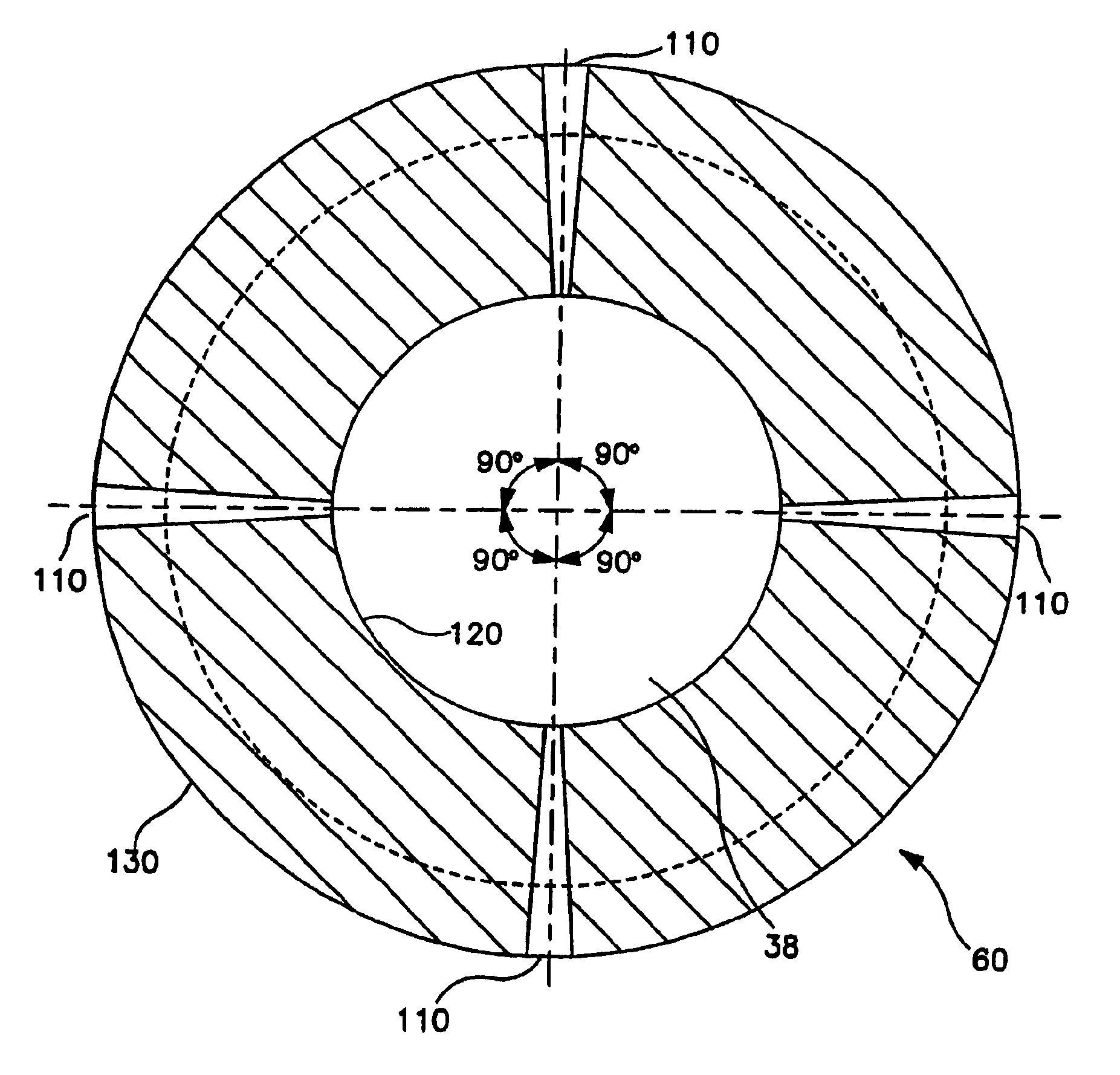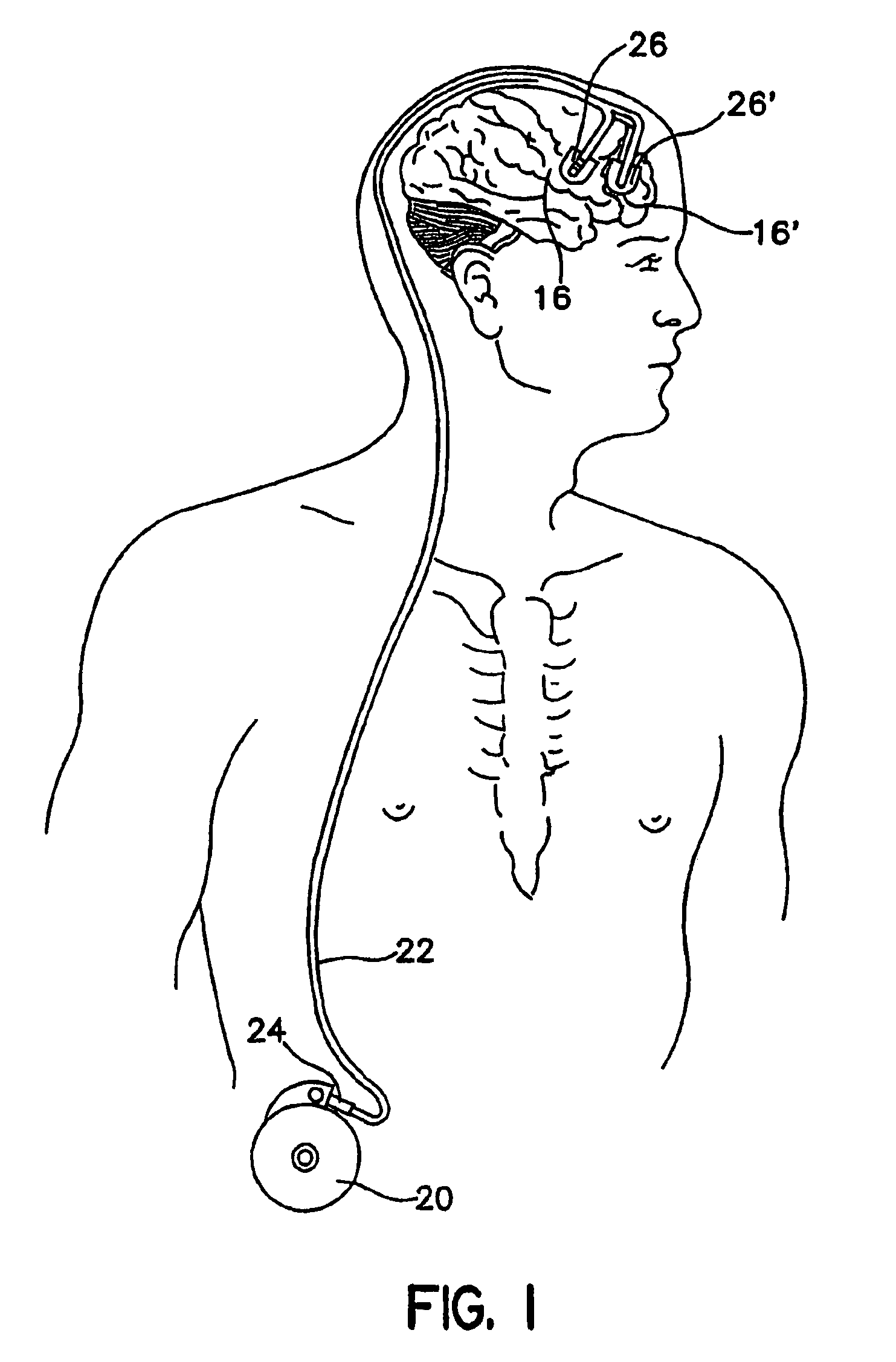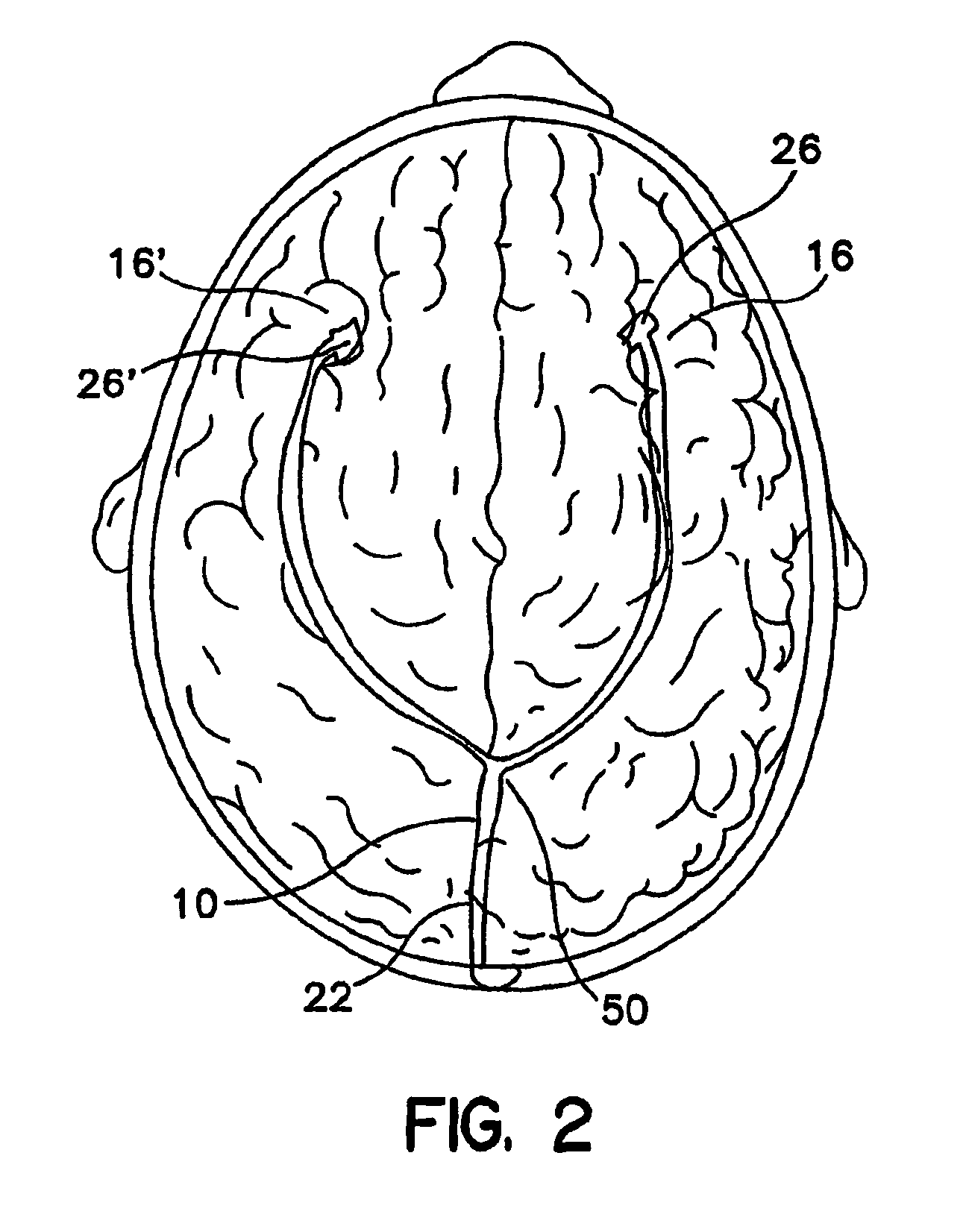Catheter for target specific drug delivery
a catheter and drug technology, applied in the field of medical catheters for target specific drug delivery, can solve the problems of inability to specifically target the patient site, lack of homogeneity of pore placement and pore number for fluid discharge, etc., and achieve the effect of accurate placemen
- Summary
- Abstract
- Description
- Claims
- Application Information
AI Technical Summary
Benefits of technology
Problems solved by technology
Method used
Image
Examples
Embodiment Construction
[0027]As shown in FIGS. 1 and 2, in an embodiment of the present invention, catheter 22 has a proximal end 24, and distal ends 26 and 26′. Distal ends 26 and 26′ are connected to catheter 22, which splits at a “Y” connector 50. Distal end 26 is positioned in the right anterior cerebral cortex 16, and distal end 26′ is positioned in the left anterior cerebral cortex 16′. Proximal end 24 is attached device 20, which can be an implantable infusion pump. While two distal ends are shown, the present invention can have one or more than two distal ends.
[0028]As further shown in the embodiment depicted in FIG. 2, catheter 22 has a catheter portion 10 downstream of device 20 and upstream of connector 50.
Combined Diffuser / Restrictor
[0029]As shown in FIG. 3A, where there is only one distal end 26, and there is no connector 50. Catheter portion 10 preferably comprises an elongated tubular wall 30 defining a central lumen 32. In this embodiment, catheter 22 begins at proximal end 24 and terminat...
PUM
 Login to View More
Login to View More Abstract
Description
Claims
Application Information
 Login to View More
Login to View More - R&D
- Intellectual Property
- Life Sciences
- Materials
- Tech Scout
- Unparalleled Data Quality
- Higher Quality Content
- 60% Fewer Hallucinations
Browse by: Latest US Patents, China's latest patents, Technical Efficacy Thesaurus, Application Domain, Technology Topic, Popular Technical Reports.
© 2025 PatSnap. All rights reserved.Legal|Privacy policy|Modern Slavery Act Transparency Statement|Sitemap|About US| Contact US: help@patsnap.com



